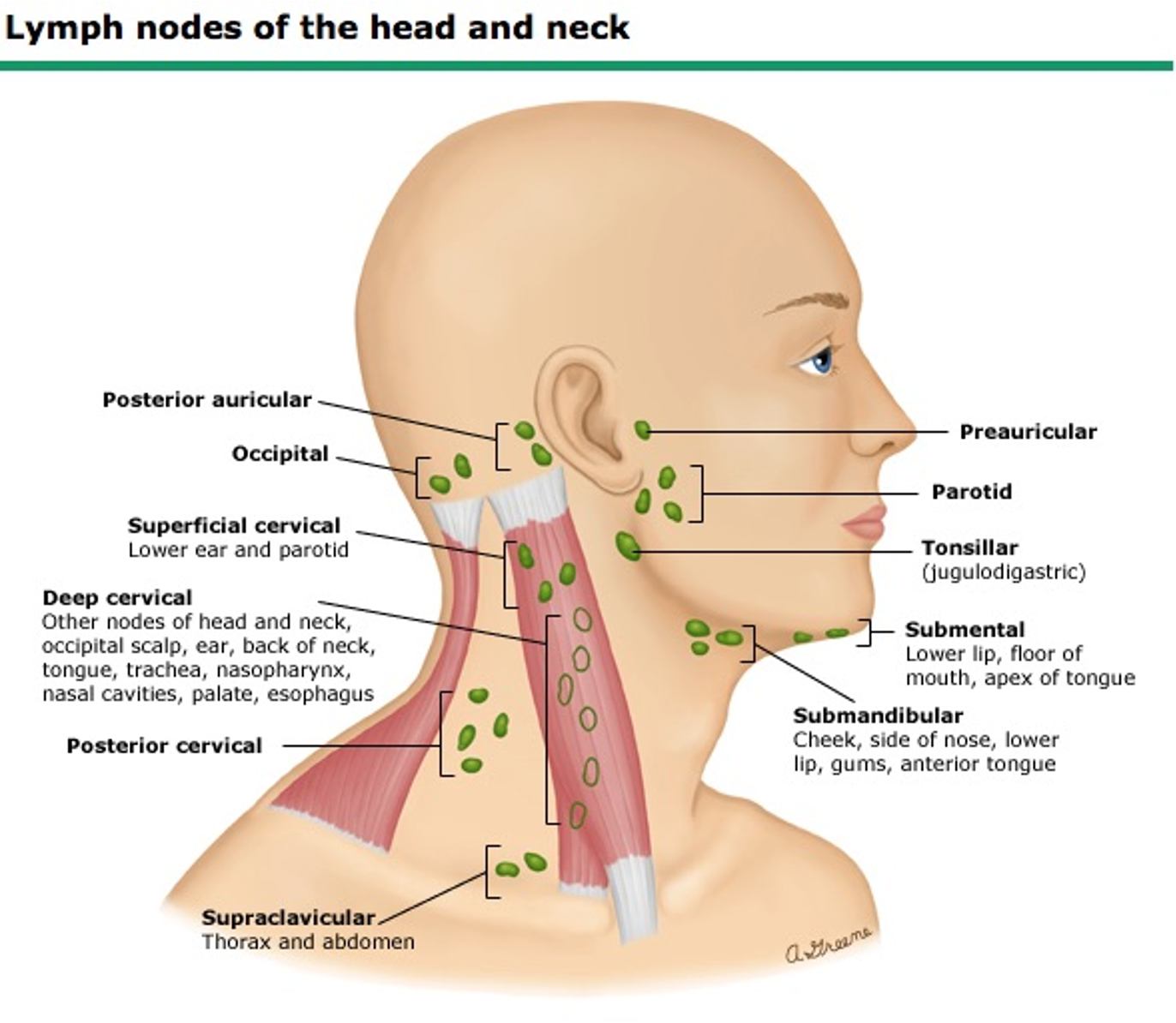lymph nodes
1/4
There's no tags or description
Looks like no tags are added yet.
Name | Mastery | Learn | Test | Matching | Spaced |
|---|
No study sessions yet.
5 Terms
what are the lymph nodes called (with mnemonic)
Plump - paratoid
Old - occipital
People - pre- auricular
Party - post - auricular
So - submental
They - tonsillar
Sometimes- submandibular
Salsa - superficial cervical
Dance- deep cervical
Past - posterior cervical
Sunrise - supraclavicular
where are the lymph nodes
Parotid: In front of your ear (cheek area)
Occipital: Back of your head, near the neck
Pre-auricular: In front of your ear
Post-auricular: Behind your ear
Submental: Under your chin
Tonsillar: Back of your throat (tonsils area)
Submandibular: Below your jaw, on either side
Superficial cervical: Along the side of your neck, below your jawline
Deep cervical: Deep in the neck, near the trachea
Posterior cervical: Back of your neck, above your shoulders
Supraclavicular: Above your collarbones

whats the technique to palpate the lymph nodes
Use the pads of your fingers.
Gentle, circular movements.
Compare both sides for size, consistency, tenderness, mobility.
what to note on palpitation
Size
Tenderness
Texture (hard, rubbery, soft)
Mobility (fixed or mobile)
what could lymph nodes indicate
Tender, soft, mobile nodes: Infection (e.g., sore throat, tonsillitis)
Hard, fixed, non-tender nodes: Cancer (e.g., lymphoma, metastasis)
Rubbery, non-tender nodes: Lymphoma
Generalized swelling: Viral infections, autoimmune disease, leukemia
Supraclavicular nodes enlarged: Serious, possible cancer (especially left side = Virchow’s node)